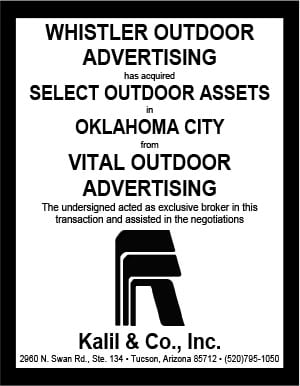 By Richard Rothfelder, Rothfelder and Falick
By Richard Rothfelder, Rothfelder and Falick
Our law firm is currently handling a billboard condemnation case, in which the recent controversy over President’s Trump’s declaration of a national emergency to fund the border wall involves the same basic legal principles.
Specifically, our client is facing the usual situation where his billboard sitting for decades next to a major freeway is supposedly going to be in the way of the new right of way widened by the State. The twist is that only about five feet of the sign face will actually encroach on the expanded highway, and the client was able to simply “flag” the face more than the necessary five feet to eliminate this aerial encroachment. However, this procedure designed to eliminate both the need to remove the sign and file a condemnation suit was undertaken by the client without notice to or a permit from the State (there is a dispute about whether a permit is required, and if so, whether it would have been granted under these circumstances). After the State filed a suit to condemn and remove the sign, we moved to dismiss the case based on the “public necessity” doctrine of the Constitution.
Under the Fifth Amendment to the US Constitution, and Article I Section 17 of the Texas Constitution (as well as every other State Constitution in the Nation), the Government’s power to acquire private property through eminent domain is strictly conditioned upon the payment of just compensation, and on a public use contemplated for the property. The cases interpreting the Constitution explain that, first, the Government’s intended use must be public, and highway improvements are usually conceded as such. Second, however, the Government’s condemnation must actually be necessary to advance the ostensible public use. For example, cases have recognized that a condemnation proceeding is void where “the property sought to be taken is not within the area in which the condemning authority has the power of eminent domain.” It follows, therefore, that in our case, the State’s eminent domain proceeding should be dismissed, upon proof that it is not publicly necessary to remove the sign for the public use of highway improvements, if the aerial encroachment was eliminated by flagging the face before commencement of the condemnation case.
The burden of proof in these public necessity cases is difficult, however. While the inquiry often involves an analysis of the Government’s determination of what and how much land is necessary to condemn for the stated public use, that determination is accorded a presumption of correctness. In fact, some cases instruct that this is a legislative determination, which can only be overturned by the judiciary by proof the Government acts fraudulently, in bad faith, or arbitrarily and capriciously. Thus, in many cases a simple resolution or minute order, not to mention an ordinance or statute, by the legislative body will suffice as proof of the Government’s public necessity and use.
By now you’re probably wondering what this has to do with President Trump and his declaration of a national emergency to fund the border wall. You’ll recall the President’s assertion of executive authority came after several weeks of acrimonious national debate, including the clear mandate from the Democratically controlled Congress that funding would not be appropriated for the acquisition of the private property and construction costs for the border wall. Most of the legal and social controversy has focused on whether the financial, security, and humanitarian crisis cited by the President at the border justifies the declaration of a national emergency under the Federal statute passed in 2008, which has been used repeatedly by many other Presidents for relief from hurricanes and other natural disasters. In the condemnation context, however, the legal arguments of the property owners whose land has been targeted for acquisition through eminent domain for the border wall are more straight forward: it is a legislative, not an executive, determination of the public use and necessity for acquiring private property to warrant imposition of the power of eminent domain. And, as to the border wall controversy, that determination came from President Trump, not from Congress, which had even expressly rejected it.
One of the reasons I love representing the billboard industry is the extremely interesting legal, and often constitutional, issues confronting my clients. Sometimes those legal issues even parallel the controversial social and cultural issues debated at the national level.
[wpforms id=”9787″]
Paid Advertisement

















